How To Sewout The Highest Quality Machine Embroidery Designs
In this article, we will discuss how to sew out the highest quality machine embroidery designs by providing tips and tricks to help you achieve the best results.

Introduction:
Machine embroidery is a popular method for creating beautiful and intricate designs on fabric. Whether you’re creating a custom t-shirt, a unique patch, or a personalized gift, having high-quality machine embroidery designs can make a big impact. However, creating high-quality machine embroidery designs requires paying attention to the details, including the type of needle, machine speed, thread quality, fabric stabilization, and more.
With these guidelines in mind, you can create designs that look professional, are durable, and stand the test of time. So, whether you’re new to machine embroidery or have been sewing for years, read on to learn how to take your designs to the next level.
Choose the Right Design:
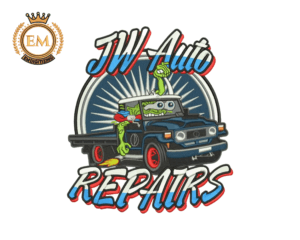
The first step in creating high-quality machine embroidery designs is to choose the right design. Make sure that the design you choose is of good quality, with clear lines and a good level of detail. Avoid designs that are too complex or detailed, as they may not translate well onto fabric. Look for designs that are digitized specifically for machine embroidery to ensure that they will work well with your machine.
Use High-Quality Thread:
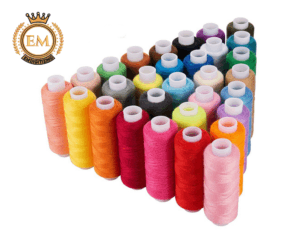
The quality of the thread you use is just as important as the design you choose. Always use high-quality thread that is designed specifically for machine embroidery. Cheap or low-quality thread may break or fray easily, resulting in an uneven and messy design. A good quality thread will produce a clean and crisp design that will last longer.
Use the Right Stabilizer:
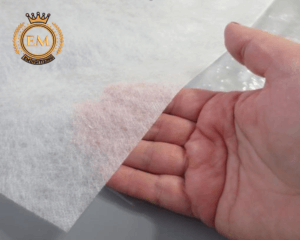
Using the right stabilizer is critical to creating a high-quality machine embroidery design. The stabilizer will help to hold the fabric in place and prevent it from shifting during the embroidery process. There are different types of stabilizers available, such as tear-away, cut-away, and water-soluble stabilizers. Choose the right stabilizer based on the type of fabric you are using and the design you have chosen.
Choose the Right Needle:
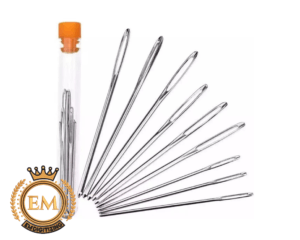
The right needle is also essential for creating high-quality machine embroidery designs. The needle you use should be appropriate for the fabric you are working with, and the thread you are using. A needle that is too small may cause the thread to break or the fabric to tear. A needle that is too large may leave visible holes in the fabric. Choose the right needle based on the fabric and thread you are using.
Test Your Design:
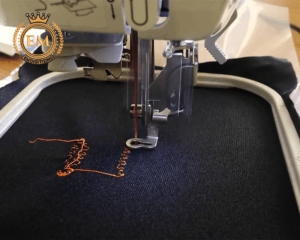
Before you start embroidering your design on your final fabric, it is essential to test it on a scrap piece of fabric. This will help you to make any necessary adjustments and ensure that the design looks the way you want it to. Test the design with different thread colors, stabilizers, and needles until you get the desired result.
Clean Your Machine Regularly:
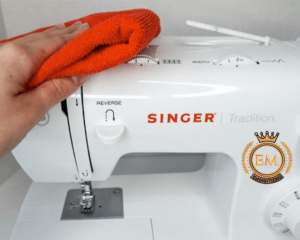
Keeping your machine clean and well-maintained is crucial to creating high-quality machine embroidery designs. Regularly clean your machine and oil it as needed to ensure that it runs smoothly. A well-maintained machine will produce a cleaner and more precise design.
Practice, Practice, Practice:
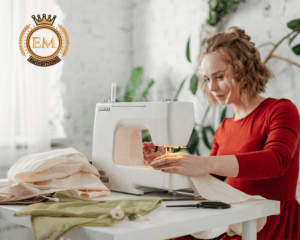
Practice makes perfect when it comes to machine embroidery. The more you practice, the better you will become at creating high-quality designs. Start with simple designs and work your way up to more complex ones. Take the time to learn and understand the features of your machine and how to use them to create the best designs possible.
Conclusion:
In conclusion, creating high-quality machine embroidery designs requires attention to detail and the right techniques and tools. By choosing the right design, thread, stabilizer, needle, and by testing your design, you can ensure that your embroidery designs are of the highest quality. Keep your machine clean and well-maintained, and practice regularly to perfect your skills. With these tips and techniques, you can create beautiful and intricate machine embroidery designs that will impress and delight.
We hope you enjoyed reading this article as we did in writing.
If you want to customize embroidery logo digitizing, EM DIGITIZING will be your best choice. At EM DIGITIZING, we deliver the best embroidery logo digitizing services with the best quality. We offer 50% off on all our services to our potential customers on their first order. So, get a free quote now and we will get in touch with you.
Hope this article will be helpful for you guys!
If there’s any question related to this article feel free to comment to us. And, thanks for reading!
Creating designs for an embroidery machine typically involves several steps:
Choose a design concept: Start by deciding what you want to stitch. This could be a simple monogram, a complex logo, or a decorative element.
Create the design: You can create your design using software designed specifically for machine embroideries, such as Wilcom or Embroidery Studio. You can also use graphic design software like Adobe Illustrator or CorelDRAW to create the design, but you will need to save the file in a format that can be read by your embroidery machine software.
Digitize the design: The next step is to digitize your design, which involves converting the design into a format that can be read and stitched by your embroidery machine. Digitizing software, such as Wilcom or Embird, is used for this process.
Test the design: Before stitching the final product, it is important to test the design to ensure that it stitches correctly. You can do this by stitching a sample on a scrap piece of fabric, or by using the machine’s built-in simulator.
Stitch the design: Once you are satisfied with the design and it has been tested, you can then stitch the final product. You will need to load the design into your embroidery machine, hooping the fabric and backing, and then start the stitching process.
Adjust the design as needed: If the design does not stitch correctly, you may need to make adjustments to the digitized file and test it again. This process may need to be repeated several times until you are happy with the final result.
Zdigitizing is a popular online store that offers a wide range of embroidery designs that you can purchase directly from our website.
We love our customers, that’s why we also offer a vast variety of free embroidery designs.
Our collection includes various types of embroidery designs such as applique, logos, patches, 3D puff, and more. We offer designs for different types of embroidery machines and formats, such as DST, PES, JEF, and more.
There are several different types of machine embroidery designs, including:
Line Art Designs: Simple, black-and-white line drawings that are ideal for monograms and text.
Satin Stitch Designs: Designs created with a continuous, smooth satin stitch. These designs can be used for decorative borders, lettering, and simple illustrations.
Fill Stitch Designs: Designs that are filled in with a solid color, using a stitch pattern to create a textured or smooth surface. Fill stitch designs are often used for simple illustrations, logos, and large areas of color.
Cutwork Designs: Embroidery designs that feature cut-away fabric within the design. These designs are typically used to create a lacy or decorative effect.
Applique Designs: Designs that feature fabric pieces that are sewn onto the fabric as part of the design.
Redwork Designs: Designs that feature simple, bold outlines in red thread. These designs were popular in the early days of machine embroidery and are still used today for their classic look.
Embossed Designs: Designs that use dense, raised stitches to create a three-dimensional effect. These designs are often used for decorative accents, borders, and lettering.
